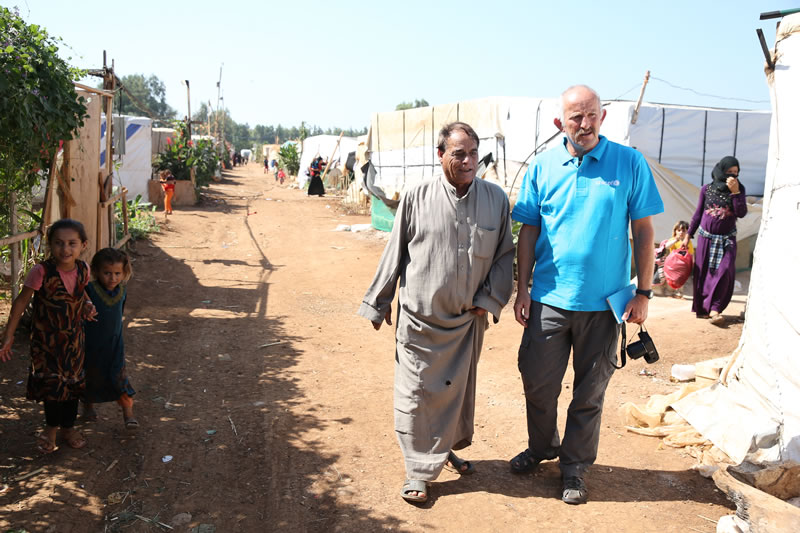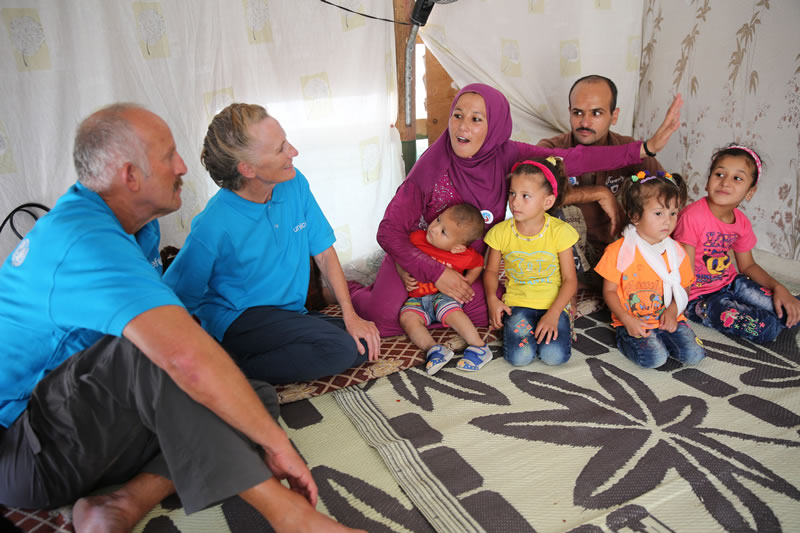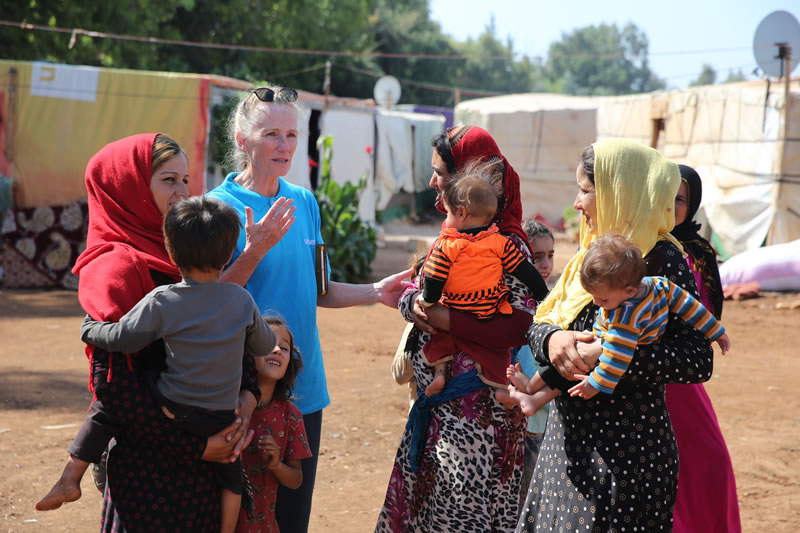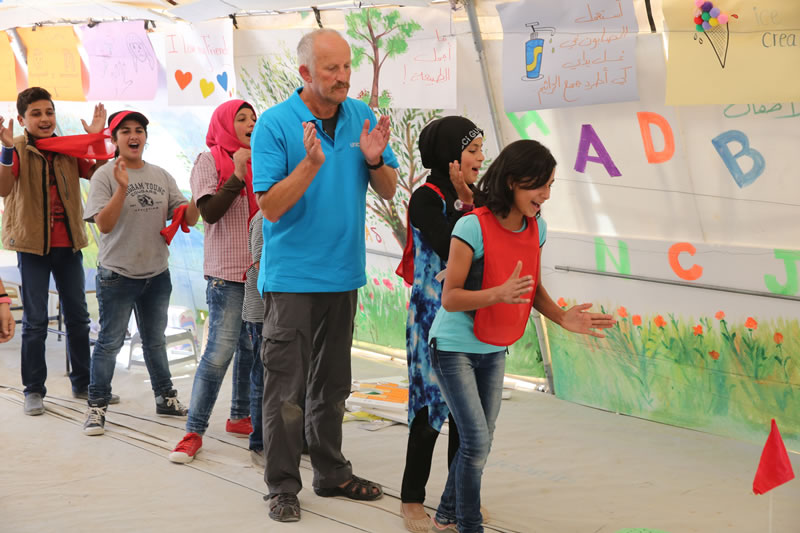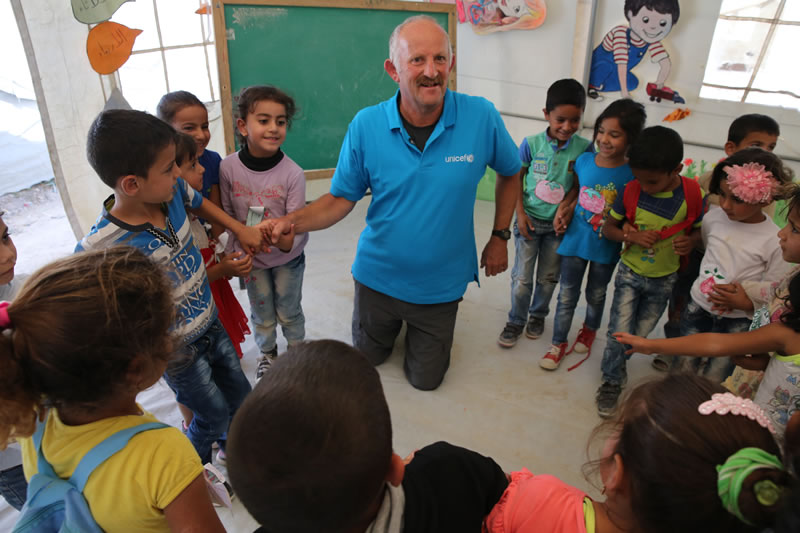Well that was the plan, Joanne and I were supposed to finish our latest round of visits to our social development and humanitarian projects by going to Homs in Syria where – as you would expect – there are very serious humanitarian problems as a result of the conflict. The plan was to enter Syria via Damascus and then drive the 220 kms up to Homs – in a heavily armed convoy of course.
But as it happened fate intervened on the road to Damascus and the bombing of another aid convoy led to a temporary ban on all UN personnel entering Syria. That caught us, our visit was cancelled. But we still managed to get within 60kms of Homs by going to Aakkar on the Lebanese border and visiting a number of “informal settlements” there.
Unlike Jordan where the largest refugee camp for Syrian families is now Jordan’s 4th largest city, Lebanon does not allow formal refugee camps, lest the refugees assume any sort of permanence. Lebanon already has half a million Palestinians in long term “temporary” camps and is fearful of more. Instead there are 4,000 of these informal settlements that spring up on land that’s vacant – from inner city building sites, to corners of farmers’ fields. And there size ranges from 1 or 2 families to dozens. The Beqaa Valley for instance, the fertile foodbasket of Lebanon, has more Syrian refugees in it than Lebanese. The landowners are satisfied so long as the refugees pay rent. But you can imagine the strain on sanitation, food, schools and health facilities in the surrounding municipality from this 50% boost in population.
But only 30% of the Syrian refugees are in informal settlements, many are being hosted by Lebanese families or are in their own rental accommodation. And to boot, the Syrians are not allowed to work – again because the Lebanese do want them to leave as soon as possible, which of course is the wish of the Syrians as well, to return to their homes. The Syrian men are confined largely to the settlements because the army checkpoints will pick them up and if they’re not registered (many aren’t) then they are regarded as illegals and risk being deported.
With families under so much stress – financial, limited access to food and water, sanitations, healthcare and education – and in such close proximity to neigbours, violence rates especially on small children are very high – 84% of 3-4 year olds have experienced it, 51% of 1-2 year olds. Indeed taking the young children population as a whole in Lebanon, 43% of all children show mental impacts of violence. In addition 25% of the kids in Aakkar have diarrhoea, and only 32% of Syrian refugee children have adequate food.
But the overwhelming impression from our visit to Lebanon (Beirut, Aakkar and the Beqaa Valley) was the incredible generosity of the Lebanese people. Already wracked by a recent history of instability including a civil war, and being caught up in the periodic scraps between the Shi’ite Hezbollah group and Israel, Lebanon has been rebuilding and Beirut is looking quite rejuvenated nowadays, back to being one of this region’s most attractive cities. The population of Lebanon is only 4 million, but it now has 2 million refugees here as well. Imagine the stress from that on infrastructure – makes a few extra cars on Auckland roads look trivial.
The informal settlement approach varies municipality by municipality depending on the preferences of the Mayor. In some areas there is still a lot of direct hosting by Lebanese families and some Syrians are in their own rental accommodation (indeed only 30% of refugees to date are in camps).
But the peace in Lebanon is fragile. It operates a form of consociationalism wherein the seats in parliament are allocated across factions, rather than by election. The President has to be Christian (Maronite), the Prime Minister Shi’ite, and the Speaker of the House, Sunni. With so many Sunni refugees pouring in from Syria this fragile balance between the 3 factions is strained. The government has banned any form of measurement of sectarian numbers or census to avoid the unrest that might arise from the (now) Sunni majority. While the Syrians aren’t resident it wouldn’t take much for their presence to inflame Hezbollah (away fighting for Assad in Syria against ISIS right now) into turning its attention on any unrest in Lebanon. And Hezbollah is stronger (thanks to being armed by Iran) than the Lebanese army.
So it would be naïve to think that Lebanon is immune to the instability of its Syrian neighbour. And as the war in Syria continues, the spectre of ISIS-related refugees coming into Lebanon cannot be dismissed. That could be hugely disruptive amongst the Syrians already here.
Our visit to Aakkar comprises 3 sites – a Psychosocial facility for traumatised children in Tal Al Hayat Municipality, an informal settlement that is under stress (Qaabrine), and an informal settlement that is a (smaller, 7 families only) model of what UNICEF & partners wish to achieve.
The young (8 and under) children in the Pyschosocial unit are extremely affectionate and desiring of being cuddled – Joanne gets mobbed by them all. The teachers run group activities involving them all working together with her. We ask the kiddies what they want to be and doctors and teachers dominate the list. As we have seen in so many similar situations across the world before, these aspirations are somewhat removed from the reality of their situation. The kids are mainly working children who either sell CDs on the street, work in the family farming business or child mind (yes that’s right an 8 year old looking after a 2 year old) while mum works.
Our second visit of the day is to the first of two informal settlements. This one is big, located in a farmers field and the mood here is aggrieved, even hostile. In a meeting held with leaders it’s clear they have a long list of grievances but the major one is that winter is coming and the lack of metal on the road into and through the camp means that water will accumulate and just flow unrestricted through the tents. They will be knee deep in stagnant water and with all the disease ramifications of that. They want the road metalled and urgently. It transpires the problem is the Municipality and the land owner neither of which want to make life too comfortable for the refugees. A second concern is that the men can’t work so that’s severely restricting family income and the ability to feed, clothe, and cater to health needs. The refugees cannot access the standard health and education resources of Lebanon by right – they have to be funded by the international NGO sponsors. And World Food Programme has had its funding cut meaning more refugees are going without.
Next day we’re off to the Beqaa Valley that lies half way between Beirut and Damascus. We’re to visit 3 sites – a public school that has both Lebanese and Syrian children; a Pyschosocial support facility and a mobile health unit of UNICEF’s that will be in one of the local informal settlements for the day.
The public school Director is fiercely proud of how there is no difference between the treatment of Lebanese and Syrian children in her school and she seems genuinely committed to ensuring that continues. Her main concerns are overcrowding and the quality of the building. Her school is running 2 shifts per day, but she’s very frustrated that in instances where resources become strained, the authorities have told her that it’s the Syrian children that have to go without.
The Psychosocial facility is a camp in its own right situated in the middle of the valley where dozens of informal settlements have sprung up. This facility is available for the refugees who can’t get registered for public school. The children range from pre-school to teanagers and activities are tailored for each age cohort and the supply of teachers and tent-class rooms enables that. From group games centred around dealing with violence, to a newspaper publishing facility to music teaching and performance, the facility provides a full menu of experiences for these kids whose life otherwise comprises work or camp confinement.
One little boy whose family’s tent we visited had severe face and hand burns received when the family tent had caught fire (a candle tipped over). His care was progressing but it was clear that he would be needing a lot of skin grafting work in future. The doctor said there’s no reason he won’t get that.
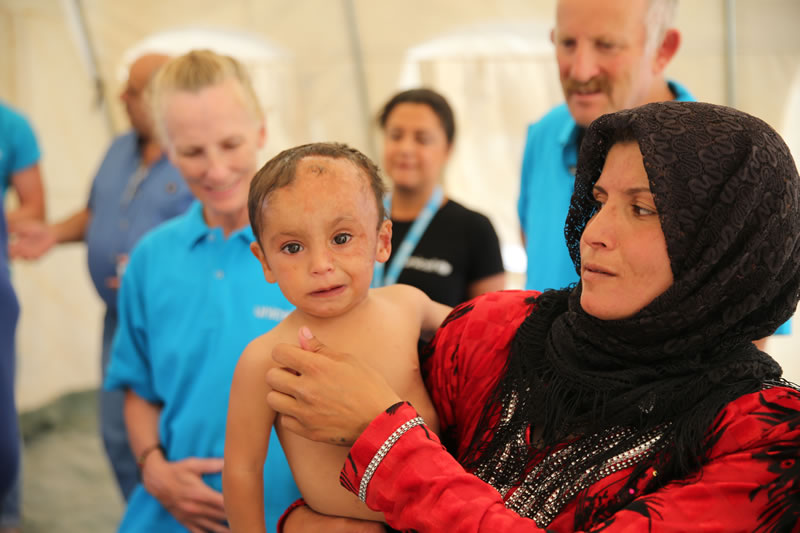
So we head back over the mountains from the famous Beqqa valley toward Beirut with a mix of feelings:
- hugely impressed, humbled by the reaction of the Lebanese socety to this catastrophic “windfall”. It puts the reaction of Australia and Christmas Island in stark contrast – but if we’ve learnt anything from all our travels it’s that the poorer people are, the more generous they are – materially and of spirit.
- worrying about the disturbance ahead from ISIS-indoctrinated refugees descending on these settlements, and Lebanon’s lack of a plan how to deal with this.
- the clear message that all the Syrians want is to go home – which makes the resolution of that war ASAP the total imperative.
- the international interagency cooperation and allocation of responsibilities is impressive, the quality of local NGOs that have sprung up to give effect to the big funding and strategic response from the international community has been impressive.
- the Lebanese strategy of informal settlements as opposed to formal camps is being driven by the need to send a clear message that nothing is permanent here, don’t get too comfortable. But sadly the 60 year example with Palestinian refugees in their own land and beyond, does attest that such an approach may not be realistic. However the informal settlement approach does I suspect make for more mainstreaming, particularly of children into Lebanese society.
- The world needs to understand that Lebanon itself is in a very precarious political place with the sectarian interests maintaining a very finely balanced peace. And then 1.5m more refugees arrive! It’s a miracle that Lebanon hasn’t erupted in a secular war now Sunni numbers are so great. The world has to keep funding the largest refugee population in the world if it has a chance of preventing that happening.
This puts into stark relief NZ’s contibution to this theatre – one of the smallest per capita contributions in the world. And a number of people from the NGO’s working up there told us so directly – a little embarrassing. Anyway, we came away pretty happy that the projects we’ve been funding, which operate in the pyschosocial space dealing with the vulnerable Syrian kiddies, are performing well. Always room for improvement of course.

